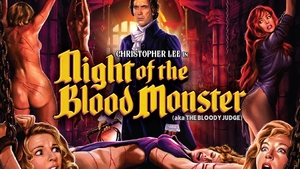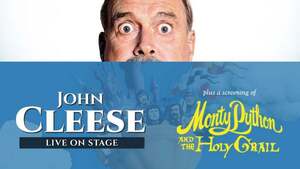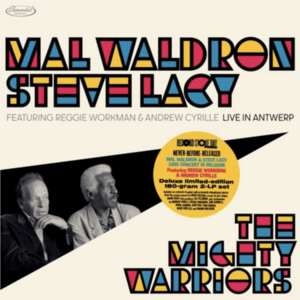Baaa-buh Saaaapp-puhh!
by Shelton Hull
What does it mean that the most popular athlete in Japan is a black man from Washington State? “The Beast” Bob Sapp has captured the imagination of that country’s huge fighting sports industry, endearing himself to the children who watch cartoons and the adults who watch things like Samurai TV for its violent content. He is huge in a way that nothing has been in contemporary America since perhaps the peak of Michael Jackson.
In just over one year he’s had real fights for K-1 and PRIDE, and worked pro-style matches for Wrestle-1 and New Japan Pro Wrestling. The Japanese press voted Bob Sapp as pro wrestling’s MVP in December 2002. It’s hard to tell which is the more remarkable fact: that he was the first gaijin (foreigner) to win the award in 29 years, that he won the award with only two matches under his belt, or that there’s at least one store in Japan that sells nothing but Bob Sapp merchandise. When Barry Bonds was mobbed by fans during a trip to the Island earlier this year, it was not because he’s the best baseball player in America; it was because he looks a little like Bob Sapp.
Bob Sapp was born on September 22, 1973. He stands six feet seven inches tall and weighs around 375 pounds. Before entering the fight game, Sapp played football for the University of Washington. He was drafted in the third round by the Chicago Bears, and later played for the Minnesota Vikings before tendinitis (and charges of steroid use) brought his first career to a premature end. The idea of entering the wrestling business was first floated by former MN governor Jesse Ventura during his NFL days. His “Beast” persona was developed in the last days of World Championship Wrestling.
Sapp is not the sort of guy who makes the ladies swoon. “I don’t think I’m Kid Romeo,” he told Reuters, in reference to an Asian wrestling heartthrob who doesn’t pull the numbers Sapp does. Showmanship is a big part of his success. His ring entrance music, depending on the situation, alternates between the theme from “2001: A Space Odyssey” and “Holiday” by Madonna, which he augments with a gaggle of dancing girls and sequined robes with feather-boa trim. A Wrestle-1 match with Ernesto Hoost began with Hoost jacking the “Holiday” gimmick, only to be one-upped as Sapp floated down from the ceiling, suspended by steel cables and tossing handfuls of glitter onto a crowd that had finally seen it all. He’s also been known to eat such things as cow tongues and (non-glossy) photos of his opponents.
A Japanese fan site claims that “Sapp was asked to appear on more than 200 shows during the winter holidays between December 2002 and January 2003, and he’s been offered starring roles in more than 30 TV commercials [for things like fabric softener and DVD players].” Three biographies have been written so far, and he even released a CD called “Sapp Time” in March 2003. Konami is developing a Bob Sapp video game, too.
His MMA debut was a TKO over Norihisa Yamamoto at PRIDE 20 in April 2002. His “gentle giant” was born with the concern he displayed after an early knockdown left his opponent unconscious. His legend, though, started with an unspeakably brutal powerbomb on Rodrigo Nogueira on August 28 which even Sapp admits was more an act of desperation than literal strategy. Sapp’s style is what Hall-of-Famer Dusty Rhodes would call “clubberin’.” He’ll drive his opponents into the corner, then basically punch them until the ref stops the fight, which has left more than one foe shaking his head in apparent disbelief. He’s been taken to the ground occasionally, but only to respond with some of the nastiest-looking rabbit punches that human eyes have ever seen.
Sapp’s trainer, Dr. Mauro DiPasquale, raves about his client’s discipline on the Metabolic Diet website. “Effort isn’t a problem with Bob. He’s the most driven athlete I’ve ever met. Give him a routine that involves doing a thousand repetitions, and a rationale behind it, and he’ll do it or drop… The reason for doing both high intensity and high volume work in the same training session is to develop the functionally diverse muscle fiber types that are involved in increasing Bob’s fighting strength and skills. I feel that the adaptive response from this type of training maximizes the training effect for fighting sports.”
So far, so good. No one in MMA history (which predates the invention of television) has done so well on so high a level of competition with so little actual fighting experience. Size alone cannot be the answer; witness the case of sumo star Emmanuel Yarbrough, who was knocked out in UFC III by a man 400 pounds smaller. Bob Sapp isn’t getting knocked out, period.
Beating Sapp requires, first, a willingness to sustain concussive-strength blows long enough to get him winded. His first and only loss resulted from a kick to the ribs from Mirko Cro Cop last March. But Sapp’s best fights so far, on October 5 and December 7, 2002, were against the brilliant and dangerous Hoost, who seems to have figured out the best way to handle a man who outweighs him by well over 100 pounds: stick and move, keeping Sapp off-base with stiff kicks to his huge thighs while shooting in for quick face shots. Their feud has even made its way into Wrestle-1, in a notable display of the overlap between MMA and pro wrestling.
So, now what? “He’s too big a star to keep fighting, because fighters have to be hungry and he’s not,” says Dave Meltzer, editor of the Wrestling Observer newsletter (www.wrestlingobserver.com) and the leading figure in the wrestling press. “He’ll start getting hurt if he keeps fighting, but has to keep fighting because he’s got 15 matches left on his contract.”
There is but one big question now remaining in the saga of Bob Sapp: How much higher can he go in the Asian market before America catches Bob Sapp fever? Meltzer: “My gut is he’ll be in WWE at some point and flop miserably because they don’t know how to get anyone over… It wouldn’t shock me to see him in pro wrestling in Japan when he’s close to 60 like [Abdullah the] Butcher, [Tiger Jeet] Singh and Terry Funk. Japanese love their superstars and have great memories. Whether he’ll want to do that probably depends on his financial situation at that age, but I think he’ll be doing some work in Japan forever.”
The final word belongs to Bob Sapp himself, as quoted in the Global Training Report last year: “What matters is not the length of a career but its density.” His remarks are worth contemplation in an era in which catastrophe looms around nearly every corner. The fact is that Sapp has already outdone himself, parlaying a whim into an unlikely success story that has already captured the imagination of a country in the grip of an economic downturn that does not suffer fools gladly. How he plays his hand could be worth millions of dollars- or trillions of yen.












